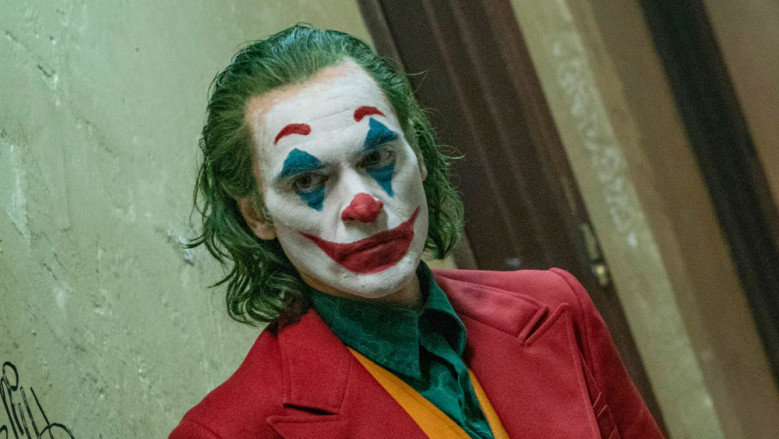‘Joker’ shows some grim truths about mental illness
January 26, 2020
(Alert: Some spoilers throughout the article.)
We have all heard of the notorious arch nemesis of Batman, the clown who runs around and causes chaos for Gotham City. But the newest edition to the DC comics character adds a bit more realism than most people are used to.
In 2019’s film, “Joker,” the audience sees Arthur Fleck, a wannabe comedian who paints his face with clown makeup for his daily job, but cannot seem to paint his emotions and feelings of loneliness and isolation. Being bullied and misunderstood by the world around him, Arthur suffers through his demeaning job as being a performing clown whose dream is to be a famous comedian. But the only thing Arthur can get people to laugh at is his humiliating self in the public’s eye. The movie overlooks the depressing life of Arthur, and shows the slow descent into madness as he transforms into the criminal mastermind known as the Joker.
The film is nominated for eleven Academy Awards including Motion Picture of the Year, Best Director and Best Actor.
While this story takes place before the Joker earns his name and battles it out with his enemy, the evidence of mental illness and isolation from society plays huge factors into the reason for the maddening behavior otherwise known as Joker himself.
It is no shock that society tends to turn their heads away when it comes to mental illness. Since this topic is taboo and often avoided, there is a lot of stigma and misunderstanding when it comes to mental illness, and all the different causes and signs that are associated with them.
According to NAMI, the National Alliance on Mental Illness, almost twenty percent of American adults have suffered from a mental illness last year in 2018 — that’s 1 in 5 adults.
These numbers are almost matched when discussing just teenagers (usually ages between age 13-17), as 1 in 6 teens suffer from mental illness in America.
This should be a wake-up call for society to become aware that mental illness is real, and should be seen as a medical condition the same way a broken bone is, and not as a disease that “will go away” or “isn’t real.” The stigmas surrounding mental illness only harm society and the people suffering more than if it were to be discussed and understood as a problem society needs to fix.
While mental illness comes in many different forms, the leading illnesses that affect millions of people are depression, stress and anxiety, OCD, PTSD, and personality disorders. These common illnesses are troubling for people physically, mentally, emotionally, and socially, which are all very important to maintain a healthy lifestyle.
In “Joker,” Arthur Fleck suffers from a rare disorder that causes him to laugh uncontrollably for no reason, and unfortunately this happens throughout the film at very grim and misunderstood times. The public sees Fleck and his laughing as strange behavior and bullies and disregards him from society more than ever.
Fleck and his disorders, along with his troublesome lifestyle of living in poverty with his mother who he takes care of, cause his dark life.
The psychiatric treatment that he can afford with government aid don’t offer much help for Fleck and he struggles with his depression and loss of self-worth.
The raw and realistic feel of Arthur Fleck and his struggles on the screen showcase a sad, yet relatable, feel to viewers. The audience cannot help but feel sad for Fleck as they see his side of the story that society rarely digests.
According to NAMI, suicide is the second leading cause of deat for people ages 10-34; and with Arthur Fleck contemplating suicide multiple times throughout the film, this only shows the gruesome reality some people struggle with daily.
Courtney Gesicki, a twenty-five year old woman who saw the film, felt a connection with the character.
“The Joker is just like you and I,” Gesicki said. “He was a human who fell below the world and struggled to get a helping hand from society, and suffered alone until he couldn’t take it anymore. It’s really sad but is so true for most people who suffer with mental illness.”
While the film does show gruesome and violent behavior, the film is not advocating for people to harm or kill people for treating them poorly. This must be clear for the world to know. But what the movie is trying to do is to showcase the raw and crippling reality that mental illness can have on people, and to show everyone that those who suffer are not alone.
“Joker” is a fantastic film, and the portrayal of mental illness and its harsh reality only increases society’s awareness on the issue at hand. The more that society is exposed to the struggles of mental illness, the more society can understand and help those in need to end the stigma and help release the world of its suffering.
If you have not seen “Joker,” I highly recommend you do — and if you already have, see it once more.

